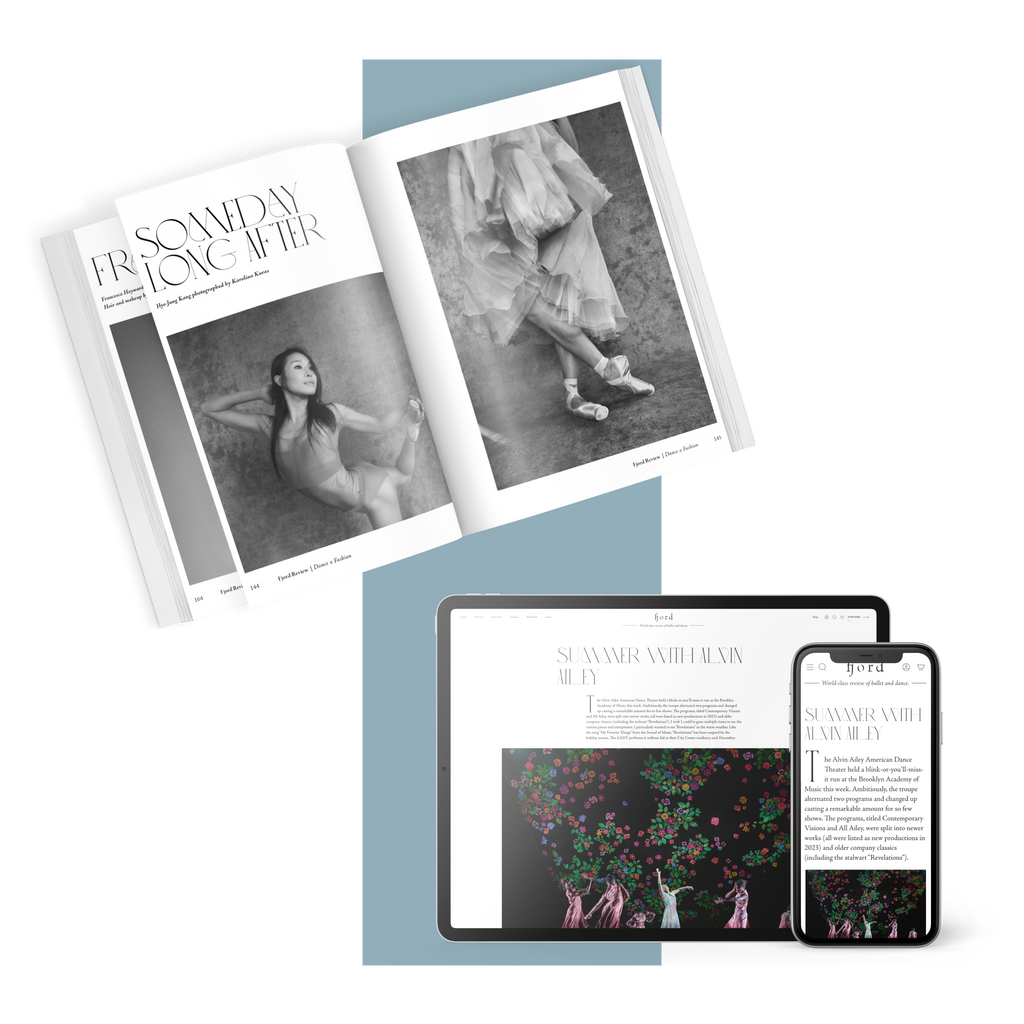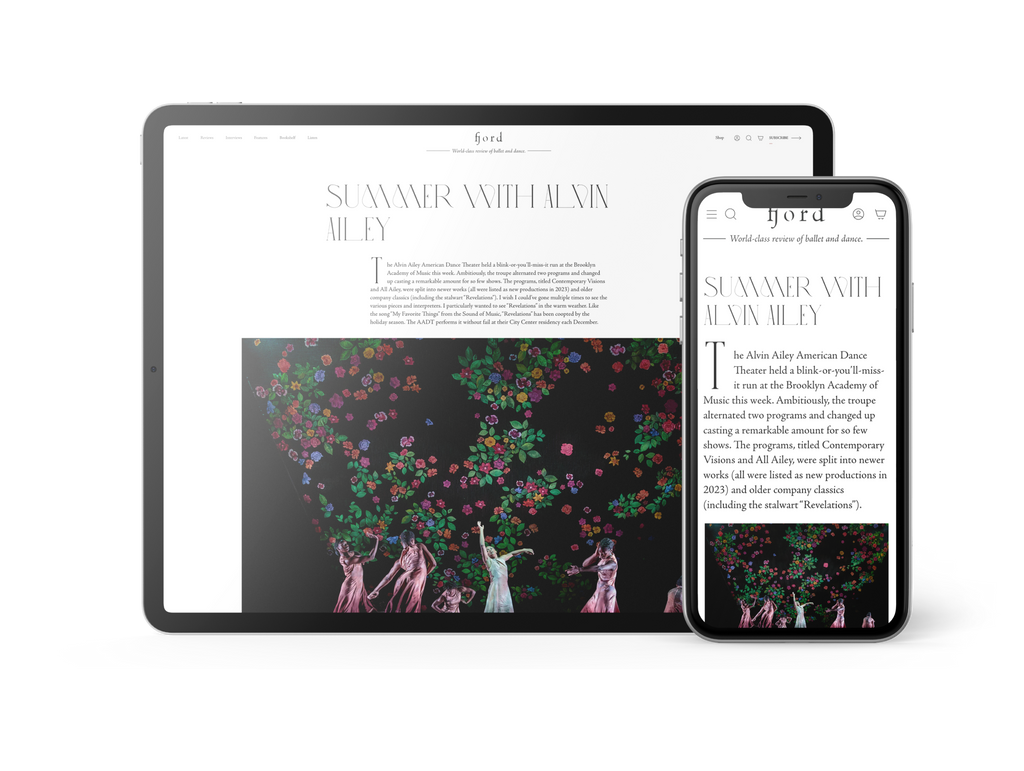Talent Time
It’s “Nutcracker” season at San Francisco Ballet—36 performances packed into three weeks—which means that the company is currently serving two distinct audiences.
Continua a leggere
World-class review of ballet and dance.
The New York City Ballet’s excellent 2023 Fall Season featured only the works of founding choreographer George Balanchine. This winter, eight choreographers are being showcased as the company’s 75th anniversary celebration continues. But on paper, the most well-conceived program is another all-Balanchine one: the combination of “The Four Temperaments” and “Liebeslieder Walzer.” These ballets present both sides of the Balanchine coin: his stark coolness as well as his lush romanticism. On Tuesday night, however, a wan “4Ts” and a somewhat miscast “Liebeslieder” failed to make this contrast pop, though there were some thrilling individual performances in both pieces that hinted at this bill’s latent potency.
Performance
Place
Words



Starting at $49.99/year
Your weekly source for world-class dance reviews, interviews, articles, and more.
Already a paid subscriber? Login


It’s “Nutcracker” season at San Francisco Ballet—36 performances packed into three weeks—which means that the company is currently serving two distinct audiences.
Continua a leggereLast week I caught up with choreographer Pam Tanowitz and Opera Philadelphia’s current general director and president, countertenor Anthony Roth Costanzo to talk about “The Seasons,” the company’s latest production premiering at the Kimmel Center’s 600-plus seat Perelman Theater on December 19.
Continua a leggereIf Notre-Dame remains one of the enduring symbols of Paris, standing at the city’s heart in all its beauty, much of the credit belongs to Victor Hugo.
Continua a leggereWhen dancer and choreographer Marla Phelan was a kid, she wanted to be an astronaut. “I always loved science and astronomy,” Phelan said.
Continua a leggere
Oh, thank you Mindy!
Good points here; the production and performances are sharply observed. We see the stage events in a welcomely fresh way. One note: Balanchine went on record as saying that the setting for Liebeslieder he had in mind was not based on anything in Vienna but rather on a rococo building in Munich—the Amalienburg Park palace.
https://www.schloss-nymphenburg.de/englisch/p-palaces/amalien.htm
A delightful reading of performances I missed while recovering at home from surgery. The review had me visualizing the ballets as if sitting in the theater.